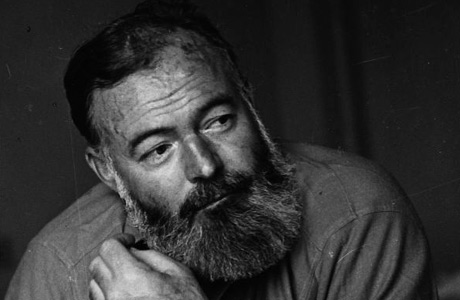WRITING AND BLEEDING? HERE’S A WAY TO SHARE THE SUFFERING
By Lee Gutkind
“There is nothing to writing. All you have to do is sit down at a typewriter and bleed.” So said the Nobel Prize winning author, Ernest Hemingway. But, then and now, it isn’t just the act of writing that causes so much suffering and struggling, but the fact that while you are facing the typewriter—or computer keyboard or yellow legal pad—you are all alone. There’s no one to help in any way—to ease the suffering or stop the “bleeding.”
The program launched last month by the Consortium for Science, Policy and Outcomes (CSPO) at Arizona State University at the Writer’s Center in Bethesda, MD may not make the writing process any easier, but it does enable writers to share the pain and struggle of the writing experience—and benefit at the same time. The 24 participants/fellows of the program, “To Think, To Write, To Publish,” will not be writing independently; they are collaborators—working together on a long form creative nonfiction essay that combines the research acumen of a scholar and the skill and experience of a nonfiction writer, fiction writer or poet. Their essays will encompass an aspect of science, innovation, and policy (SIP) scholarship with a special challenge: The essays will be written in creative nonfiction (narrative) form.
The fellows were selected from a pool of 200 applicants worldwide. The 24 winners met for the first time at an evening reception and dinner Wednesday, October 3. The first full day, Thursday, was comprised of an in-depth session on the craft, content and structure of creative nonfiction which I presented—followed by an overnight “immersion” assignment to write a scene that would combine information and story—in such a way that it would be accessible to the general public. That’s actually the reason and the rationale behind “To Think, To Write, To Publish”—to use nonfiction narrative to introduce important ideas about SIP—future challenges and decisions related to science and technology--to the general public.
The following day, Friday, the essays were discussed and debated. There was a science policy presentation by my co-PI on the project, Dave Guston, and then the writers and scholars were matched, and the new teams of collaborators began to make plans about how they would work and write together. That evening, editors from the journals, Health Affairs and Issues in Science & Technology joined me (Creative Nonfiction Magazine editor) along with a freelance writer and Washington Post reporter, in a panel discussion concerning the challenges of blending policy and story in essays and articles.
These events all led up to the final and perhaps the most significant day when accomplished science writer, Virginia Morell joined the Fellows in a lecture she titled, Creative nonfiction: An insider’s perspective of how to find and use narrative in science and policy. Later that morning, editors from The Atlantic, National Geographic, Slate, Publisher’s Weekly and Harper’s participated in a program which began with a “pitch-slam” in which the collaborators concisely presented article ideas to the editors—like elevator pitches--in three minutes. The editors responded with comments and critiques. It was a fast, furious and productive three hours.
The “To Think, To Write, To Publish” program, supported by the National Science Foundation, will lead to a special issue of Creative Nonfiction Magazine collecting the essays. But the collaborators were urged to also try to sell these pieces to other top magazines—or other ideas. Preliminary results: It seems as if a couple of the collaborators may have had success selling. The day ended with a full-house event open to the public at the Writer’s Center featuring the editors along with Virginia Morell.
The following morning the Fellows met one more time with their collaborator/partners—and their mentors, all of whom are veterans of the “To Think, To Write, To Publish” program launched in 2010. The mentors were part of the program throughout the four days at the Writer’s Center. The mentors will closely follow, counsel, edit and encourage the collaborators as they conduct their research, write, revise and rewrite until the next “To Think, To Write, To Publish” workshop—a session on revision --occurs in May.
There’s no doubt about the fact that over the next half year or so the “To Think, To Write, To Publish” fellows will be writing and suffering and maybe even bleeding a bit inside as they face their keyboard and try to turn SIP into compelling creative nonfiction stories. That’s the bad news. The good news is that they won’t be completely alone. The agony will be a group event—a little bit of suffering, along with a great deal of progress and satisfaction, shared all around.
